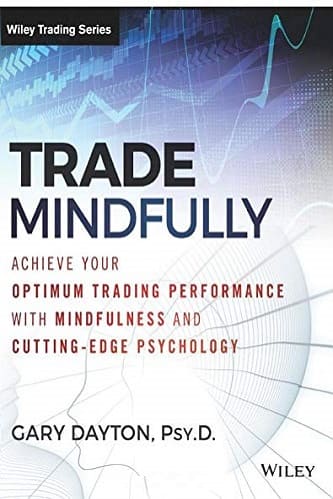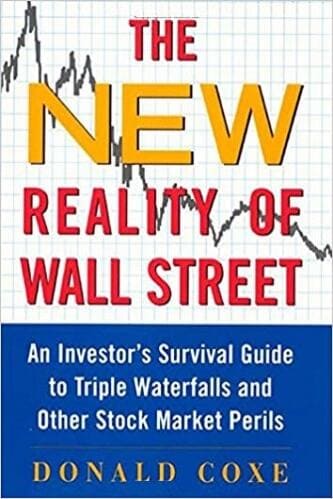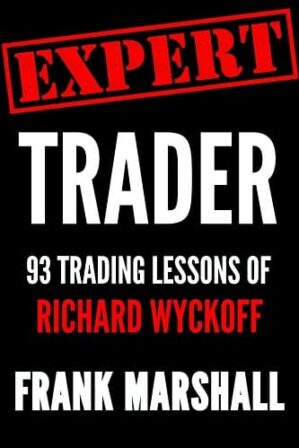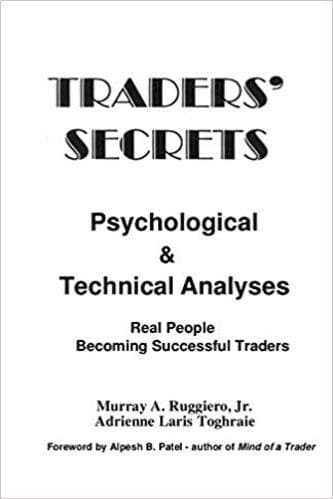Articles
Mental Harmonics By Robert Krausz
Recently I had the pleasure of teaching some 30 very bright, part time traders at Commodity Management Inc. of Chicago. These traders were certainly a cut above the average. They were above the norm in the two areas that count knowledge of technical analysis and a commitment to trading. The group consisted of men and women ages 18-60, covering the social and economic spectrum. On average they had been trading for three years plus, so definitely, they were not your typical “Beginners 101.”
The seminar was an intensive two day workshop on Symmetrics, a new method of technical analysis that uses “Time Squaring Price” concepts, the basis of my personal trading. The students grasped the validity and value of these new ideas quickly. As an added incentive, each student was to receive a personalized “Relaxation Tape” to assist with his or her personal trading problems. To achieve this, each student had to complete a questionnaire I had prepared. The 24 questions were simple and to the point. The purpose was to get the students to identify what they thought were their problems in trading, eg. “What do you think are your weaknesses in trading the markets? Please place in order of importance.” The first eight questions were:
- Execution (pulling the trigger?)
- Analysis?
- Lack of knowledge?
- Lack of confidence?
- No trading plan?
- Personal problems?
- Fear of loss
- Not devoting enough time?
The rest of the questions were designed as a back-up to this central section.
- Lack of confidence.
- No trading plan.
- Execution (pulling the trigger.)
- Fear of loss.
Before we analyze the results, two points must be clearly understood.
A.The trader’s replies were their own perceptions, what they believed prevented them from being competent floor traders. Please do not presume that these were in fact their real trading problems. The difference is subtle, but we are only concerned with the “belief system” of this group regarding their trading. Working at a subconscious level, “belief” is of primary importance, reality is secondary. It is the “belief system” (or mind set ) that has to be corrected, if confident, successful trading is ever to begin.
B. Given the fact that most people are reluctant to admit their shortcomings, it was beyond the call of duty for this group to be so honest in their replies. Usually I find the more successful a trader is, the more readily he admits to his shortcomings and the more willingly he makes adjustments to improve (which is of course, the sort of thing that potential winning traders must do.)
The fact emerged that 90% (yes 90%) of the groups’ top four weaknesses were identical. Only the order of importance was different. In other words, here was a group of well-versed market traders, covering the socio-economic spectrum, different ages, etc., and 90% of them had the same perception of what blocked them from becoming successful traders. Over the course of the last two years nearly 1,000 audio tape “Subliminals for Traders” have been purchased worldwide. All of the feedback showed that the trading problems of the Chicago group were in tune with traders everywhere, the exception being the 5 to 10% who are truly competent traders (the Market Wizards, if you like.) Their psychological problems were of a different variety, if any. It is this 5 to 10% who have learned and found their own way. Let us examine in detail the top four weaknesses selected by the group in order of their importance.
- Lack of confidence.
- No trading plan.
- Execution (pulling the trigger.)
- Fear of loss.
- What jumps off the page?
What is the root of the other three? - What causes “Lack of Confidence?”
- What causes poor “Execution?”
- What causes “Fear of Loss?”
Right. NO TRADING PLAN
Could this be one of the main characteristics that separates winning traders from losing traders? The answer has to be YES. Unequivocally. Imagine that relaxed, competent trading is a solid door, but this door needs more than one key to unlock it. A valid trading plan is but one of the keys. So, what are the TASKS OF A TRADER before successful trading can begin?
- Obtain a competent analytical methodology.
- Extract a reasonable “Trading Plan” from the methodology.
- Formulate rules for this “Plan” that incorporate Money Management techniques.
- Back-test the “Plan” (in the time frame you intend to trade) over a sufficient period.
- Discipline yourself. (The best plan in the world cannot work until you pick up the phone!) Without this you have nothing.
Suggested Books and Courses About Psychology and Risk Management
Self Management covers that vast uncharted area called “the Psychology of Trading. “Many years ago when I started trading in London, I was truly amazed by the variety of books and courses that were available on all the technical aspects of trading. But the moment I needed information on mental discipline concerning trading, the pickings were very slim indeed, virtually nil. That was the start of a 10-year plus journey into the workings of the mind which began with a call to Charles Drummond of Canada, a famous author and inventor of Point and Line charting, who told me about the “freeze” – Traders who were unable to take action. When the market changed direction, they could not. What prevented the trader from facing reality?
The trader knew the trend had changed. He was fully aware that his analysis was no longer valid. Yet he did nothing. It took me years of trading and investigating into the workings of the human mind before some answers were forthcoming. It was the very act of trading that exposed me to all of the psychological problems that arise been in other fields of endeavor, I can safely say “there is no other human activity that is like trading the markets.” Was it necessary for me to actually trade whilst investigating the psychological discipline required for successful trading? Yes. I sincerely believe so. How can you teach boxing without having been in the ring? How do you describe pain without actually experiencing it?
The first reality (and one of the keys to the door) was that analysis and trading were not the same thing. One could not just take a method of analysis (no matter how great) and turn it into a trading system or trading method. Analysis and trading are two different disciplines. Yes, good trading depends to some degree on accurate analysis, but there are some skillful traders around who are mediocre analysts. Their sound trading methodology compensates for the shortfall in their analysis. It is the attempt to turn analytical methods directly into trading methods that often causes such horrible results for new and amateur traders. As soon as this becomes clear, with it comes the realization that it takes genuine commitment to become a competent trader. (To become a great trader is another story.)
It is usually at this point that the majority of the players just walk away and realize that trading is not their calling, be it stocks, options or commodities. The ones that survive and stay, the 5 to 10%, have taken the time to work their way through the “Tasks” mentioned earlier. The majority of the time is taken to formulate and back-test a trading plan. It is the “back-testing” that gives the subconscious mind the conviction of reliability that enables the conscious mind to take action without hesitation. I know traders who have taken two full years to check and back-test their trading plans. They also happen to love what they are doing and love the market (not necessarily the other players, just the market).
The closer a trading plan comes to being 100% mechanical, the easier it becomes to develop the mental discipline to follow it and execute it without the fear of loss. The problem the Chicago group rated #1, “Lack of Confidence,” disappears in direct proportion to the validity of a back-tested trading plan. If a plan is found to work 60% of the time, then the trader will know that 40% of his trades will be losers or scratch trades. Part of the plan will be knowing how to handle the 40%, either through good money management or by qualifying the ability to “cut your losses and let the winners run.”
A mental equilibrium develops when the trader reaches a certain level of trading competency. The first four tasks have been satisfied. The last key to successful trading, in my opinion, is to achieve HARMONY between the conscious and subconscious mind. This balance has to be achieved to some large degree. The greater the balance, or alignment if you prefer, the greater are your chances for success.
One cannot be a winner until the subconscious mind is fully in tune with what the conscious mind has set out to achieve. (Please read this again!) In other words, the goal orientation and creative visualization techniques I use with my students via Deep Relaxation techniques are of no real value until we get the subconscious to accept the fact that we have a good trading plan. The greater the acceptance, the greater the harmony, and the greater the winnings! Deep Relaxation is a state of mind, not a state of sleep. I create a state of mind where the critical faculty of the conscious mind is bypassed and direct connection to your subconscious mind is established.
All memories, from the moment of your yesterday, are housed in your subconscious mind. All of your habits, good and bad, are in the same place. It is the generator of your emotions, good and bad. Your past experiences at all levels are recorded here. This is where it is etched every time you have a losing trade. The more losses you have, the deeper the impression, the greater your critical faculty, the conscious mind, starts doing its job. Just like a guardian at the gate it says, “Hold it. No more!” It starts protecting you from further losses.
That is why when you are about to enter a trade, the adrenaline starts to flow, the skin tingles and even the sweat glands get active. Fear has arrived. Your conscious mind manifests physical conditions that induce a state of fear. In some traders, this goes so far that they are literally unable to move or act at the crucial moment (or even pick up the telephone.) The longer this process goes on, the more difficult it is to correct it. Even after the trader has found his own route to a competent trading plan, the fear of loss and lack of confidence can be so deeply embedded in the subconscious mind that appropriate trading action still proves elusive. Every trade can be a mental agony that leads to poor execution, late entry, not taking losses fast enough, and getting out of profitable positions too quickly and without reason. So what to do?
Over many years the use of back-tested, valid trading plans, may cause the now invalid fears to disappear. However, a shorter route may be to replace these old invalid fears at the very place they were established in the subconscious mind. If you have really put in the effort to validate your trading plan, then (and only then) are your old fears no longer applicable. We must communicate this new fact to the subconscious mind. We literally have to erase the previous pictures of impending financial disaster and paint new pictures in beautiful colors, showing a happy, confident and successful trader, using a valid trading plan. Through Deep Relaxation techniques we bypass the critical faculty of the conscious mind and establish selective thought processes. It is the critical faculty of your conscious mind that passes judgment. This is where judgement is made: Whether your soup is hot or cold; whether you can take this trade with confidence.
Once we can enter the subconscious mind, we have bypassed this critical judgmental faculty. We can now work in a non-critical, non-judgmental environment. Because the subconscious mind cannot distinguish long and short, hot or cold, it will accept the input as factual. The critical faculty is indeed suspended and bypassed. Routine judgment is stopped and selective thoughts and pictures can be installed without questions. The more often this can be done, the better is the chance of success. Repetition can be crucial.
Now we can inform the subconscious mind that the old fears are no longer valid. We replace those beliefs with the fact that we now have a valid back-tested trading program that is profitable. These thoughts can be “etched into the copper plate” of the subconscious mind. With sufficient practice and repetition the subconscious becomes convinced that this is the new reality. If you truly back-tested and worked with your trading plan, your conscious mind is already aware of its validity. It is your subconscious mind that stopped you from taking correct action in the market. So, having informed your subconscious that you are now the owner of a valid trading plan that is to your benefit, you may now have both your conscious and subconscious believing the same facts. They are coming to a point of harmony, and balance is achieved. You now only have to convince your subconscious mind that you deserve your winnings. But that’s another story. You can only have the trading edge when you have: Clearly defined objectives. Superior information. The ability to act on both!
I wish you joy and happy trading,
Robert Krausz.
Robert Krausz is an independent full time trader and Member of the British Council of Hypnotist Examiners. He is the producer and publisher of “Subliminals for Traders” which sold worldwide. Internationally known lecturer on the “Psychology of Trading” and has travelled extensively in the Far East. His latest work “Mental Harmonics” tapes use Deep Relaxation techniques to help traders improve their confidence level.




